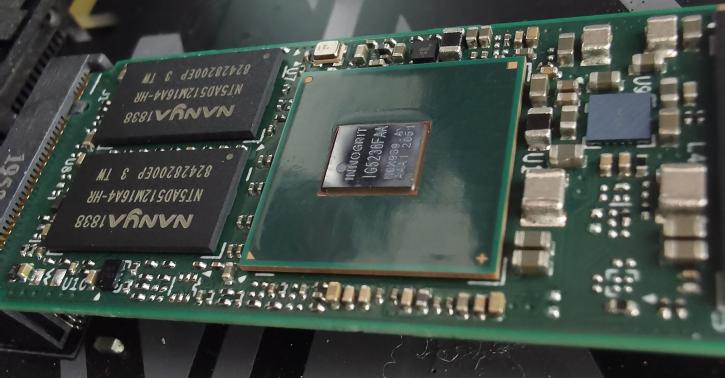Final Words & Conclusion
Final Words & Conclusion
Plextor took me off guard with the M10P due to its outstanding performance. From what we've seen, it's so good and occasionally strange that it made me wonder about it, and upon investigation, it's evident that the NAND controller is a significant part of where the voodoo happens. The results were frequently superior to those obtained before with similar Phison-controlled devices. Awesome, consider that Plextor is using a completely different controller, the Innogrit 1G5236FAA. Innogrit is a new player and startup on the market that has only recently surfaced and was virtually unknown previous to this. The company was created in 2016 by a group of former Marvell employees whose views on the company's future appeared to be diametrically opposed to those of the company's management.
Innogrit's efforts appear to have been fruitful, as the company announced its first products supporting PCIe 4.0 in the same year, formally demonstrated them in early 2020, and they have already began to appear on the market. Adata and Biwin have already disclosed their use of Innogrit IG5236, with Patriot Memory and Plextor following suit recently. Powered by InnoGrits' "Rainier" controller, the IG5236 controller outperforms the Phison PS5018-E18 controller on numerous fronts. However, linear reads all continue at 6500MB/sec. However, each time we test a new generation controller on an NVMe SSD, we are taken aback and amazed a little more. That said, in this conclusion, we're going to discuss relativity a little bit, as breaching the 7 GB/sec barrier does not guarantee that your gaming PC will become significantly quicker, and that is a basic fact.
Do we really need 7000MB/sec storage units?
Breaking the 7 GB/sec level won't necessarily make your gaming PC faster, and that is a fact. This is a very high-performance product that requires heavy and specific workloads to maximize its potential. Your PC won't boot faster because your OS is the bottleneck, perhaps your games and apps will load a notch faster than an NVMe SSD with read/write speeds of 7 GB/sec, but a split second remains a split second. This is the truth. But for those who buy a GeForce RTX 3090 or Radeon RX 6900 XT with a Core i9 or Ryzen 9 series processor, that final sniff of performance matters, whether realistic or not it makes a difference. However, we do have to mention this. New technologies like DirectStorage are on the way. This allows the graphics card to load textures directly from the SSD, freeing up processor cycles for other activities. On huge areas, they will be in the game in less than 5 seconds if they have a fast M.2 disk. Windows 11 will include this technology. Here fastest SSDs are going to make a difference.
Endurance
TLC NAND is used here and the rated values (by Plextor)) are 1280 TBW for the 2 TB version, that 640 TB written for the 1 TB model, and 320 GB written for the 512GB model. Based on a huge 50GB writes per day x 365 days per year you'd write 18.25 TB. 1280 TBW / 18.25 TB = 70 years of life and half that for the (35 years) for the 1 TB version.
Performance
The Plextor M10P is a product that is exceptionally fast. When it comes to real-world trace tests, this SSD is among the top three performers. The controller's observed bandwidth and access (latency) time of 28ms, which is far lower than the industry standard of 41~50ms we often measure (averaged). The overall linear read performance remains at 6500 /sec, whereas the overall linear write performance remains at 4000–5000 MB/sec. In our testing, we noticed that the pSLC cache size was about 48 GB, which could have been larger on our 2TB device we feel. When the buffer is gone the SSD writes slower, however, the performance does not suffer significantly. Trace testing and IOPS performance both are superb btw.
Concluding
To be honest, except for coming features like DirectStorage, you will not require 7 GB/sec SSD reading and writing performance on your storage unit in the near future, and even then, only in extreme instances would you realize a benefit. However, as with anything else of value, if you truly desire it, you may obtain it. Also this has to be stated; the Innogrit Rainier controller is a fantastic match for this SSD.
This SSD is of outstanding quality, and its performance (when utilized with suitable workloads) is breathtaking. This is the fifth test in a series of evaluations of 7 GB/sec PCIe Gen 4.0 cards, and we are not the least bit dissatisfied. Plextor outperforms the Samsung 980 PRO in terms of read performance, throughput, and latency. At 4.5 GB/sec on writes (peak), this value may appear to be a bit typical; it is not the quickest there, but it is also not a slough in PCIe 4.0 terms. Kindly place the SSD behind a heatsink provided by the motherboard. While the controller and NAND did not overheat, thermal throttling is always avoided with a heatsink. To get the most out of it, you'll need a PCIe Gen 4 infrastructure, which at the time of writing implies a compatible Ryzen processor running on a B550 or X570 chipset. Intel will also begin supporting PCIe gen 4.0 in March 2021. The Plextor M10P is adequately buffered by a pseudo-SLC write cache and 1 GB of DRAM for the 1TB model, and 2 GB for the 2TB variant. When the conditions are correct, the unit will make you shiver with performance, and when they are not, you will be limited to high-end NVMe performance on some workloads. NVMe protocol version 1.4; this SSD is one of the first to support the new NVMe 1.4 standard. You do not need to install any additional drivers; simply ensure that your operating system is up to date. After that, install and format the SSD, and you're good to go.
When it comes to PCIe Gen 4.0 NVMe units, there are often just two controller manufacturers of these SSDs, which means that all reviews are essentially identical. As such, it's a breath of fresh air to have evaluated a product using the new Innogrit 1G5236FAA controller. And kudos to that company for producing a product capable of competing with the best.
Plextor backs the storage device with a five-year warranty / or 1280 TBW in the case of the 2 TB variant. One remaining question is this: will you ever require this degree of performance? This is a response that is only applicable to end-users who wish to purchase it. The good news is that as performance improves, things will accelerate in both the low-end and mainstream markets. Consider this: 3 GB/sec NVMe SSDs are rapidly becoming the industry standard and are currently widely available; reflect on that for a second. Outstanding read performance, good write performance across the board, superior hardware, and fast access times and throughput. Definitely recommended if you can locate one at a reasonable price.
Recommended Downloads



